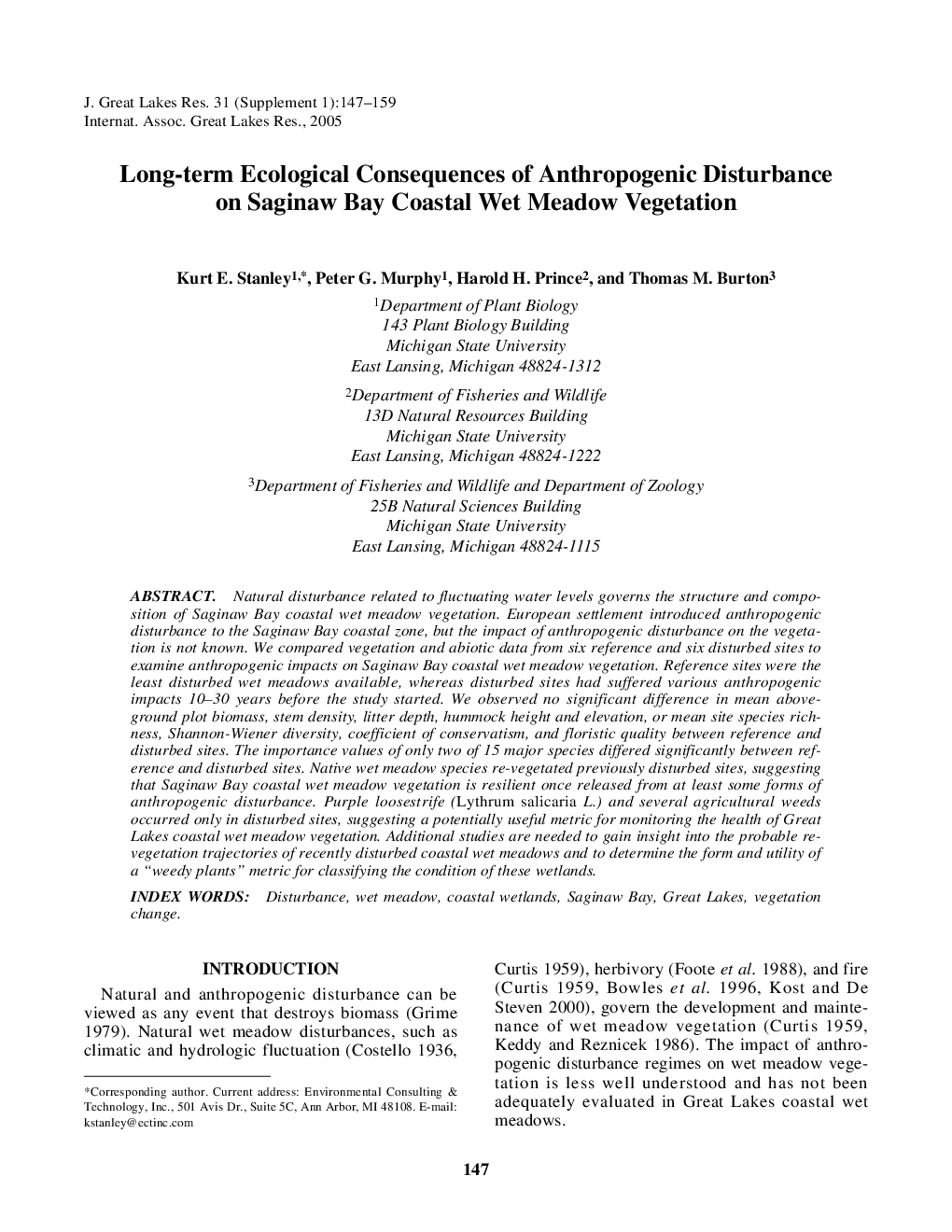| Article ID | Journal | Published Year | Pages | File Type |
|---|---|---|---|---|
| 9450284 | Journal of Great Lakes Research | 2005 | 13 Pages |
Abstract
Natural disturbance related to fluctuating water levels governs the structure and composition of Saginaw Bay coastal wet meadow vegetation. European settlement introduced anthropogenic disturbance to the Saginaw Bay coastal zone, but the impact of anthropogenic disturbance on the vegetation is not known. We compared vegetation and abiotic data from six reference and six disturbed sites to examine anthropogenic impacts on Saginaw Bay coastal wet meadow vegetation. Reference sites were the least disturbed wet meadows available, whereas disturbed sites had suffered various anthropogenic impacts 10-30 years before the study started. We observed no significant difference in mean aboveground plot biomass, stem density, litter depth, hummock height and elevation, or mean site species richness, Shannon-Wiener diversity, coefficient of conservatism, and floristic quality between reference and disturbed sites. The importance values of only two of 15 major species differed significantly between reference and disturbed sites. Native wet meadow species re-vegetated previously disturbed sites, suggesting that Saginaw Bay coastal wet meadow vegetation is resilient once released from at least some forms of anthropogenic disturbance. Purple loosestrife (Lythrum salicaria L.) and several agricultural weeds occurred only in disturbed sites, suggesting a potentially useful metric for monitoring the health of Great Lakes coastal wet meadow vegetation. Additional studies are needed to gain insight into the probable revegetation trajectories of recently disturbed coastal wet meadows and to determine the form and utility of a “weedy plants” metric for classifying the condition of these wetlands.
Related Topics
Physical Sciences and Engineering
Earth and Planetary Sciences
Earth and Planetary Sciences (General)
Authors
Kurt E. Stanley, Peter G. Murphy, Harold H. Prince, Thomas M. Burton,
